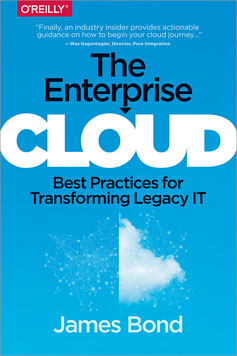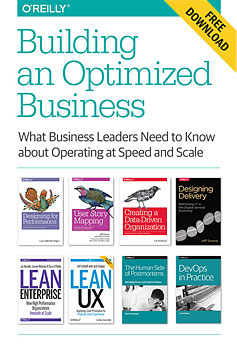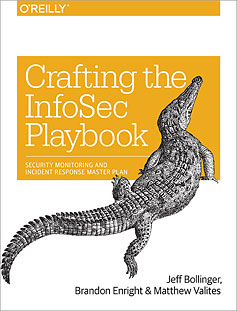"IT" entries

Batten down the hatches
Four core questions that every security team must ask itself to develop its strategy in dealing with attacks.
Massive software vulnerabilities have been surfacing with increasingly high visibility, and the world’s computer administrators are repeatedly thrust into the cycle of confusion, anxiety, patching and waiting for the Next Big One. The list of high profile vulnerabilities in widely used software packages and platforms continues to rise. A recent phenomenon has researchers borrowing from the National Hurricane Center’s tradition, to introduce a vulnerability with a formal name. Similar to hurricanes and weather scientists, security researchers, analysts, and practitioners observe and track vulnerabilities as more details unfold and the true extent of the risk (and subsequent damage) is known.
Take for example the Android vulnerability released at the beginning of August, 20151. This vulnerability, named “Stagefright” after its eponymous application, can lead to remote code execution (RCE) through several vectors including MMS, Email, HTTP, Media applications, Bluetooth, and more. These factors coupled with the fact that at its release there were no approved patches available for upwards of 95% of the world’s mobile Android footprint means the vulnerability is serious — especially to any organization with a significant Android population.

It’s usability all the way down
Designing, building, and operating services from the perspective of customer goals helps improve quality.

We often tend to think about “usability” as applying to a separate layer of digital service from functionality or operability. We treat it as a characteristic of an interface which intermediates between the user and an application’s utility. Operational concerns such as performance, resilience, or security are even further removed. This approach gets reflected in siloed design-development-operations practices. From the perspective of service quality, though, I think it may be more constructive to view usability as a characteristic of service as a whole.
What is service, anyway? In the language of service-dominant logic, it’s something that helps a customer accomplish a job-to-be-done. From that perspective, usability refers to the customer’s ability to ‘use’ the service to accomplish their goals. Everything that contributes to, or compromises, that ability, impacts usability.

The importance of orchestration in transforming legacy IT
How orchestration differs from automation in the enterprise cloud.

Buy The Enterprise Cloud.
The orchestration of workflow processes is an essential part of cloud computing. Without orchestration, many of the benefits and characteristics of cloud computing cannot be achieved at the price point that cloud services should be offered. Failure to automate as many processes as possible results in higher personnel labor costs, slower time to deliver the new service to customers, and ultimately higher cost with less reliability.
What is meant by automation? Automation is technique used in traditional data centers —and critical in a cloud environment — to install software or initiate other activities. Traditional IT administrators use sequential scripts to perform a series of tasks (e.g. software installation or configuration); however, this is now considered an antiquated technique in a modern cloud-based environment. Orchestration differs from automation in that it does not rely entirely on static sequential scripts but rather sophisticated workflows; multiple automated threads; query-based and if/then logic; object-oriented and topology workflows; and even the ability to back-out a series of automated commands if necessary.
Orchestration can best be explained through a typical use case example of a customer placing an order within their cloud service web-portal, and following the steps necessary to bring the service online. The actions below illustrate a very high level scenario where the cloud management software performs the orchestration:

Deploy Continuous Improvement
Balancing the work it takes to improve capability against delivery work that provides value to customers.

Download
Building an Optimized Business
Download a free copy of Building an Optimized Business, a curated collection of chapters from the O’Reilly Web Operations and Performance library. This post is an excerpt by Jez Humble, Joanne Molesky, and Barry O’Reilly from Lean Enterprise, one of the selections included in the curated collection.
In most enterprises, there is a distinction between the people who build and run software systems (often referred to as “IT”) and those who decide what the software should do and make the investment decisions (often called “the business”). These names are relics of a bygone age in which IT was considered a cost necessary to improve efficiencies of the business, not a creator of value for external customers by building products and services. These names and the functional separation have stuck in many organizations (as has the relationship between them, and the mindset that often goes with the relationship). Ultimately, we aim to remove this distinction. In high-performance organizations today, people who design, build, and run software-based products are an integral part of business; they are given — and accept — responsibility for customer outcomes. But getting to this state is hard, and it’s all too easy to slip back into the old ways of doing things.

Ghosts in the machines
The secret to successful infrastructure automation is people.

“The trouble with automation is that it often gives us what we don’t need at the cost of what we do.” —Nicholas Carr, The Glass Cage: Automation and Us
Virtualization and cloud hosting platforms have pervasively decoupled infrastructure from its underlying hardware over the past decade. This has led to a massive shift towards what many are calling dynamic infrastructure, wherein infrastructure and the tools and services used to manage it are treated as code, allowing operations teams to adopt software approaches that have dramatically changed how they operate. But with automation comes a great deal of fear, uncertainty and doubt.
Common (mis)perceptions of automation tend to pop up at the extreme ends: It will either liberate your people to never have to worry about mundane tasks and details, running intelligently in the background, or it will make SysAdmins irrelevant and eventually replace all IT jobs (and beyond). Of course, the truth is very much somewhere in between, and relies on a fundamental rethinking of the relationship between humans and automation.
Read more…

Elvis has left the ivory tower
Pragmatism now rules in team structure, technology, engineering practices, and operational innovation.

Ancient history in computer science (2004) provides a gem about the personas that Microsoft envisioned as users of the development environment Visual Studio. They developed three:
- Mort, the opportunistic developer, likes to create quick-working solutions for immediate problems. He focuses on productivity and learns as needed.
- Elvis, the pragmatic programmer, likes to create long-lasting solutions addressing the problem domain, and learning while working on the solution.
- Einstein, the paranoid programmer, likes to create the most efficient solution to a given problem and typically learns in advance before working on the solution.
These designations received a lot of negative press, particularly around the Mort persona, but I want to focus on Einstein and Elvis.
Formerly, software architects exemplified the Einstein persona: isolated from day-to-day development details, focused on building abstractions and frameworks. The isolation is so common that it spawned its own “Ivory Tower Architect” derogatory phrase. But the realities of building systems that scale as fast as the business does invalidates that approach. Now, Elvis, the pragmatic developer, has ascended to architect while simultaneously descending from the Ivory Tower. Modern architects don’t have the luxury of isolation from the gritty realities of software development today. Pragmatism now rules in team structure, technology, engineering practices, and operational innovation because:

DevOps keeps it cool with ICE
How inclusivity, complexity, and empathy are shaping DevOps.

Over the next five years, three ideas will be central to DevOps: the need for the DevOps community to become more Inclusive; the realization that increasing Complexity of systems is the underlying reason for DevOps; and the critical role of Empathy in the growth and adoption of DevOps. Channeling John Willis, I’ll coin my own DevOps acronym, ICE, which is shorthand for Inclusivity, Complexity, Empathy.
Inclusivity
There is a major expansion of the DevOps community underway, and it’s taking DevOps far beyond its roots in agile systems administration at “unicorn” companies (e.g., Etsy or Netflix). For instance, a significant majority (80-90%) of participants at the Ghent conference were first-time attendees, and this was also the case for many of the devopsdays in 2014 (NYC, Chicago, Minneapolis, Pittsburgh, and others). Moreover, although areas outside development and operations were still underrepresented, there was a more even split between developers and operations folks than at previous events. It’s also not an accident that the DevOps Enterprise conference took place the week prior to the fifth anniversary devopsdays and included talks about the DevOps journeys at large “traditional” organizations like Blackboard, Disney, GE, Macy’s, Nordstrom, Raytheon, Target, UK.gov, US DHS, and many others.
The DevOps community has always been open and inclusive, and that’s one of the reasons why in the five years since the word “DevOps” was coined, no single, widely accepted definition or practice has emerged. The lack of definition is more of a blessing than a curse, as DevOps continues to be an open conversation about ways of making our organizations better. Within the DevOps community, old-time practitioners and “newbies” have much to learn from each other.

Cloud security is not an oxymoron
Think your IT staff can protect you better than major cloud providers? Think again.
I just ran across Katie Fehrenbacher’s article in GigaOm that made a point I’ve been arguing (perhaps not strongly enough) for years. When you start talking to people about “the cloud,” you frequently run into a knee-jerk reaction: “Of course, the cloud isn’t secure.”
I have no idea what IT professionals who say stuff like this mean. Are they thinking about the stuff they post on Facebook? Or are they thinking about the data they’ve stored on Amazon? For me, the bottom line is: would I rather trust Amazon’s security staff, or would I rather trust some guy with some security cert that I’ve never heard of, but whom the HR department says is “qualified”? Read more…

Interim report card on O'Reilly's IT transformation
Six months in and there is much to celebrate and plenty of work still to be done.
Implementing O'Reilly's new IT strategy is like swapping out airplane wings mid-flight. We're making considerable change, but at the same time we can't disrupt the services and projects that are already underway.

3 types of IT leaders: maverick, innovator, guarantor
Understanding why an IT leader operates a certain way can net better results for everyone.
It can often appear there is only one type of person leading IT. That's not the case. Understanding an IT leader's motivations and needs will ultimately benefit all involved.
